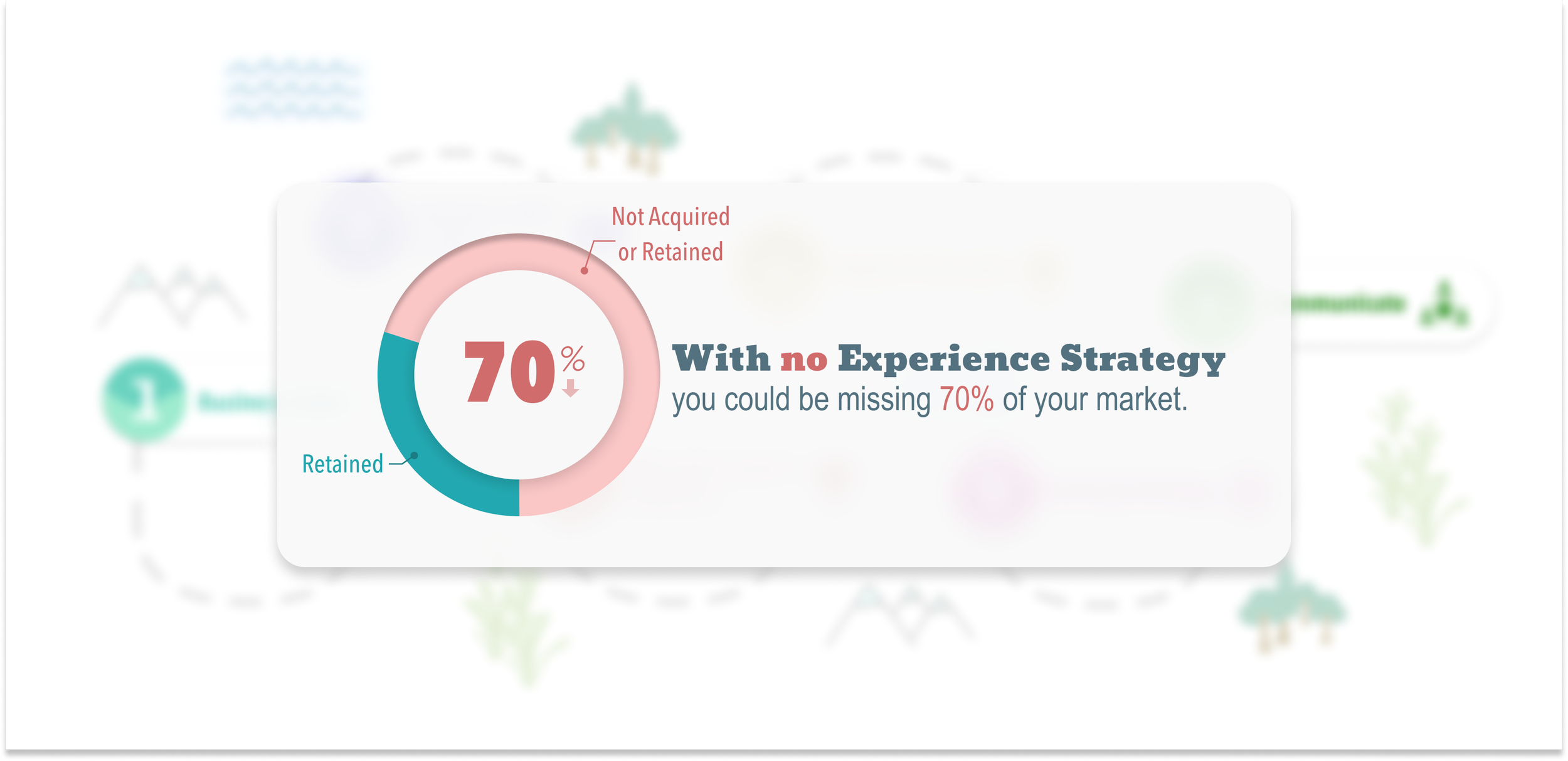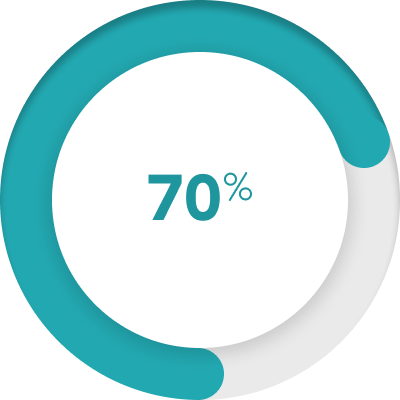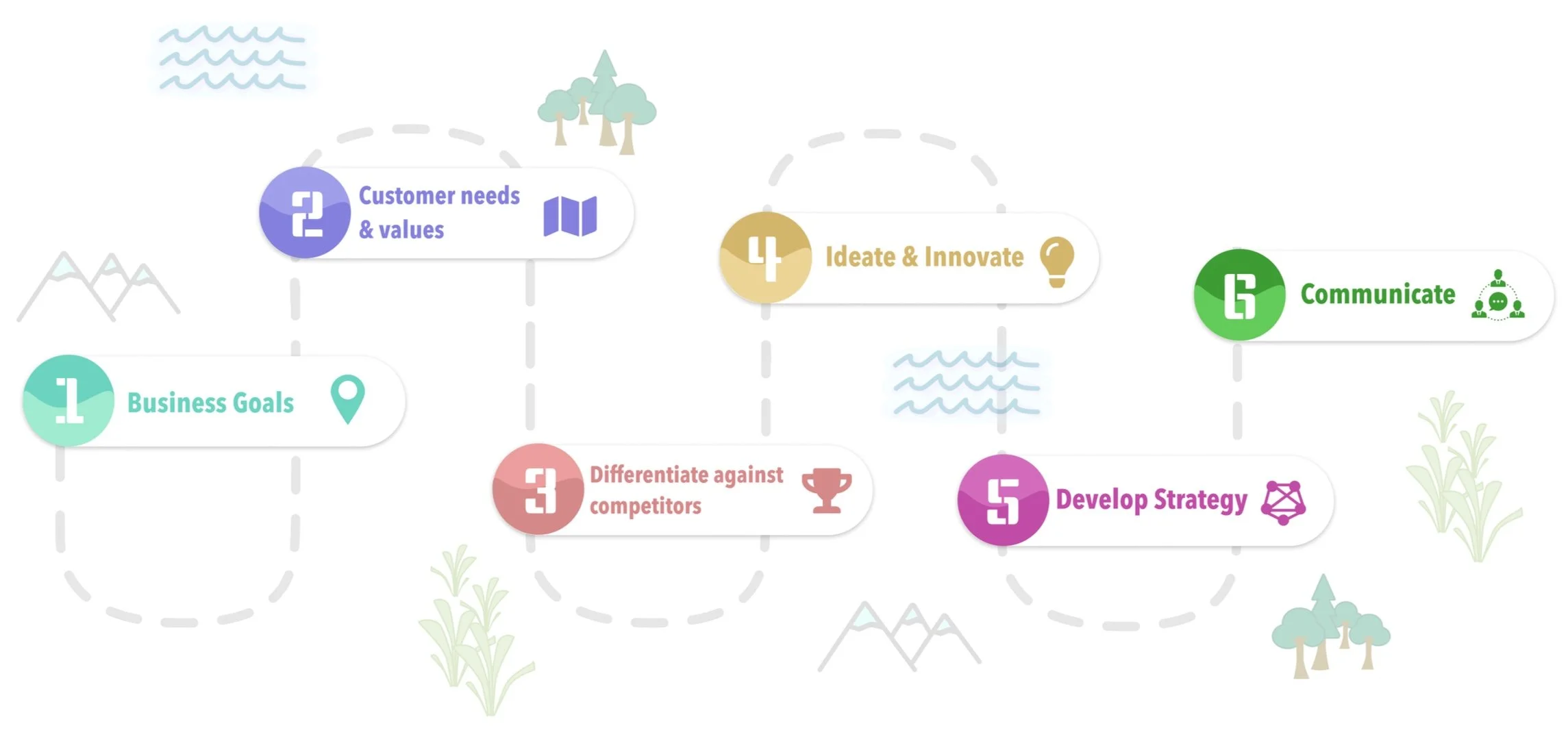Are you missing out on 70% of your market?
4 min read
Customers and users will pay more for a great experience.
Businesses exist because they have customers, and those that provide better experiences than their competitors will differentiate themselves in the market. How customers and users experience your products or services holistically is crucial to success and sustainability, a simple yet profound truth of business.
“Companies exist because they have customer, and the companies that provide better experiences than their competitors will differentiate themselves…”
If a product or service is not a “must-have” for customers or users to achieve their goals, they can easily switch to another product that might be somewhat better or worse but costs less. Because customers and users care less about features and more about achieving their goals, it doesn’t make sense to focus on features unless they directly map to measurable customer or user goals.
Goals = The improvement people want to feel in their lives and mental state, measured in feelings of accomplishment. (ex. being smarter; being more social; better physical shape; healthier; wealthier; wizer, less anxious; etc.) Sometimes goals are framed as “jobs”.
Must have = A “must-have” is something if removed from someone’s life, they would find it very hard to replace with another thing and would be faced with a lasting negative disposition.
This theoretical understanding alone doesn’t solve the challenge of staying competitive in the experience economy. However, asking the right questions and becoming a learning organization at a systemic level can. How your business makes decisions and designs experiences across the customer or user journey toward their goals is critical to a winning strategy.
The Landscape
Meeting user/customer expectations is becoming increasingly more challenging. There is a growing need to aim higher and find ways to delight customers and users that differentiate your company’s offerings. An Experience Strategy is crucial; otherwise, companies risk relying on guesses or luck. Even companies that consider themselves “too big to fail” can become the fabled boiled frog.
“70% of customers would pay more if they knew they would receive a convenient experience.”
- Forbes
FYI: “62% of millennial and 60% of Gen-Z customers will pay more for great customer service vs 46% of Baby Boomers”
- Forbes
What is Experience Strategy?
Experience Strategy is the cohesive set of activities your company undertakes to provide seamless and consistent experiences across its ecosystem of products and services. It encompasses CX, UX, marketing, services, and physical products, orchestrating a system of consistent experience elements, not just isolated interactions. This orchestration creates a competitive advantage through how these elements work together harmoniously.
A path to an Experience Strategy - the “how”
The value of Experience Strategy and a high-level definition of what it is are clear, but putting it into practice requires effort. To assist with this journey, I have developed a six-step framework that guides companies toward driving strategic decisions around how customers and users experience your brand and its promise.
Conclusion
As long as your customers and users are human, the best approach is to design your interactions - human to machine or human to human - to feel like a conversation. This can only be achieved by truly understanding their needs. The future of design isn’t about “new” technology, but about making existing technology more meaningful. As nearly every touchpoint becomes digital, we must design technology to feel human, and there is no better way to do this than through a designer’s lens.
Meaningful work is never easy, and having an experienced partner can help. If you need an Experience Strategist, have questions, or want to discuss Experience Strategy, please feel free to reach out!
Thanks!




